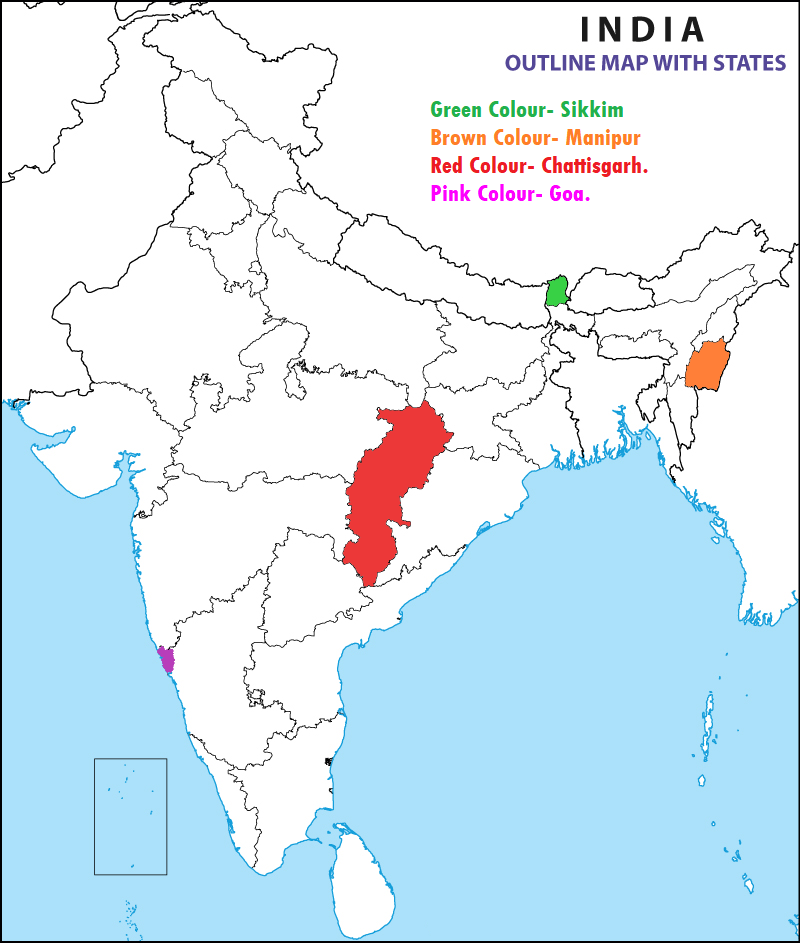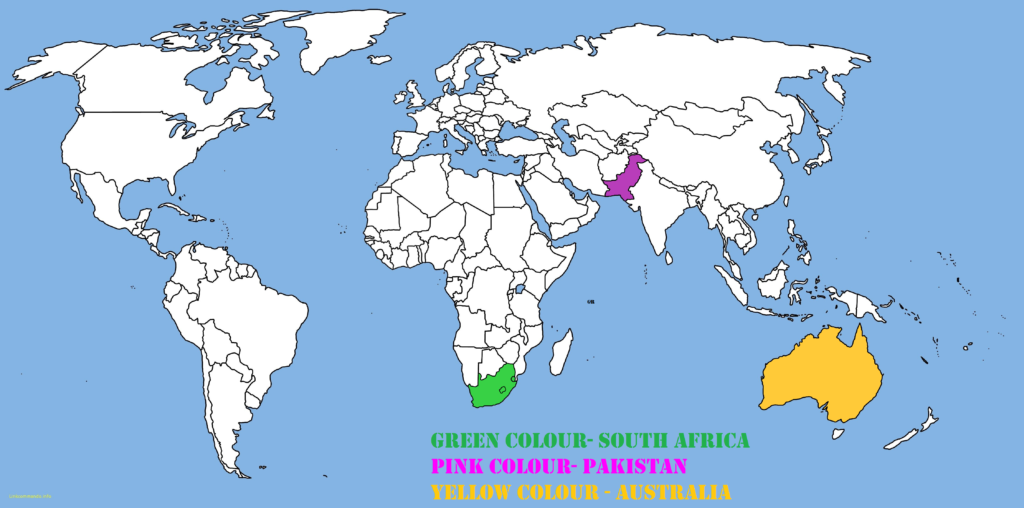Q 1. Locate the following States on a blank outline political map of India:
Manipur, Sikkim, Chhattisgarh and Goa.
Q 2. Identify and shade three federal countries (other than India) on a blank outline political map of the world.
Q 3. Point out one feature in the practice of federalism in India that is similar to and one feature that is different from that of Belgium
Feature in the practice of federalism in India that is similar to that of Belgium – There is power-sharing between the union government and state government.
Feature in the practice of federalism in India that is different from that of Belgium – India has no community government in practice, while Belgium has one.
Q 4. What is the main difference between a federal form of government and a unitary one? Explain with an example.
| Federal Form | Unitary Form |
| There is a sharing of power between union and state governments. | The power is centralized with the union government, and there is no role of state governments. |
| Example – India (India is a federal country with union government at the centre, state governments at the state level and Panchayati Raj at the local level.) | Example – Sri Lanka (The national government has all the powers.) |
Q 5. State any two differences between the local government before and after the Constitutional amendment in 1992.
| Local Government before 1992 | Local Government Post Constitutional Amendment 1992 |
| Elections to these local governments were not held regularly |
Now, it is constitutionally mandated to hold regular elections to local government bodies. |
| Local governments did not have any powers or resources of their own. | The State governments are required to share some powers and revenue with local government bodies. The nature of sharing varies from State to State. |
Q 6. Fill in the blanks:
Since the United States is a ___________________ type of federation, all the constituent States have equal powers and States are ______________vis-a-vis the federal government. But India is a _____________________ type of federation and some States have more power than others. In India, the ____________ government has more powers.
Since the United States is a coming together type of federation, all the constituent States have equal powers and States are strong vis-a-vis the federal government. But India is a holding together type of federation and some States have more power than others. In India, the central government has more powers.
Q 7. Here are three reactions to the language policy followed in India.
Give an argument and an example to support any of these positions.
Sangeeta: The policy of accommodation has strengthened
national unity.
Arman: Language-based States have divided us by making
everyone conscious of their language.
Harish: This policy has only helped to consolidate the
dominance of English over all other languages.
The policy of accommodation mentioned by Sangeeta is a correct reaction to the language policy followed in India. Due to this policy, India stands in unity with states having different languages. Had India not followed the policy of accommodation, several states could have proposed separation from the country.
Q 8. The distinguishing feature of a federal government is:
(a) National government gives some powers to the provincial
governments.
(b) Power is distributed among the legislature, executive and
judiciary.
(c) Elected officials exercise supreme power in the government.
(d) Governmental power is divided between different levels of
government.
d. Governmental power is divided between different levels of government
Q 9. A few subjects in various Lists of the Indian Constitution are given
here. Group them under the Union, State, and Concurrent Lists as
provided in the table below.
A. Defence; B. Police; C. Agriculture; D. Education;
E. Banking; F. Forests; G. Communications; H. Trade; I. Marriages

| Union List | Banking | Communications | Defence |
| State List | Police | Agriculture | Trade |
| Concurrent List | Education | Forests | Marriages |
Q 10. Examine the following pairs that give the level of government in India and the powers of the government at that level to make laws on the subjects mentioned against each. Which of the following pairs is not correctly matched?
| Local governments | Residuary powers |
Q 11. Match List I with List II and select the correct answer using
the codes given below the lists:
| List I | List II |
| 1. Union of India | A. Prime Minister |
| 2. State | B. Sarpanch |
| 3. Municipal Corporation | C. Governor |
| 4. Gram Panchayat | D. Mayor |

Option (C) is the correct answer.
Q 12. Consider the following two statements.
A. In a federation the powers of the federal and provincial
governments are clearly demarcated.
B. India is a federation because the powers of the Union and State
Governments are specified in the Constitution and they have
exclusive jurisdiction on their respective subjects.
C. Sri Lanka is a federation because the country is divided into
provinces.
D. India is no longer a federation because some powers of the States
have been devolved to the local government bodies.
Which of the statements given above are correct?

(c) A and B only

